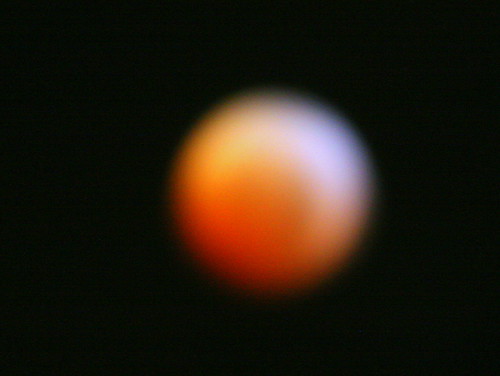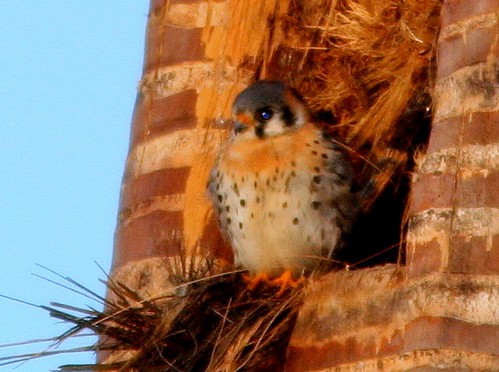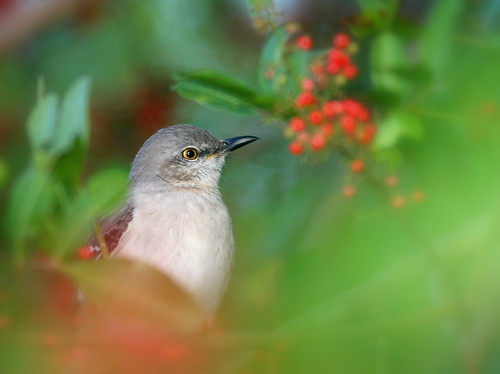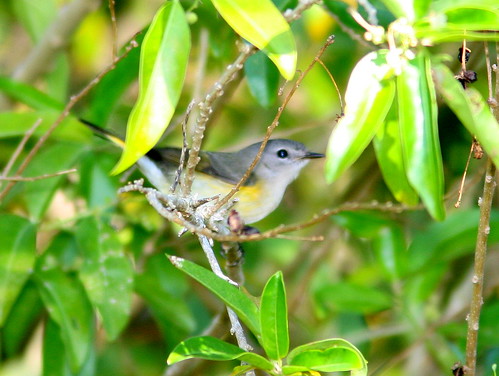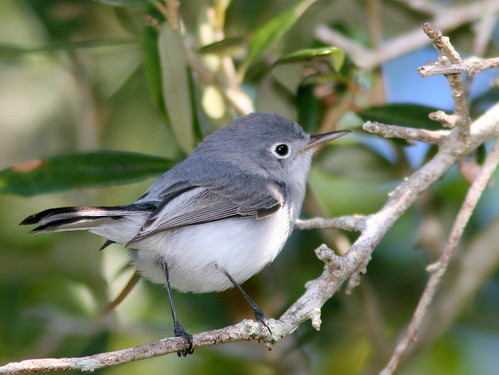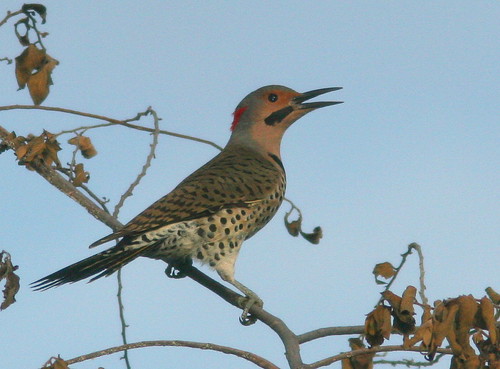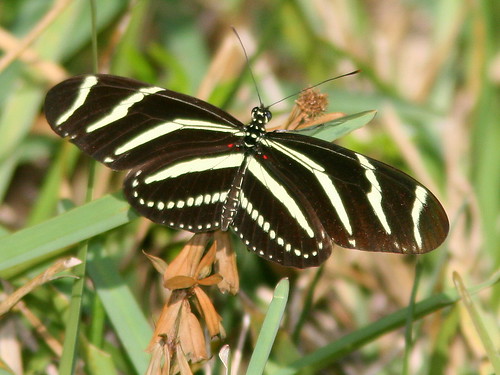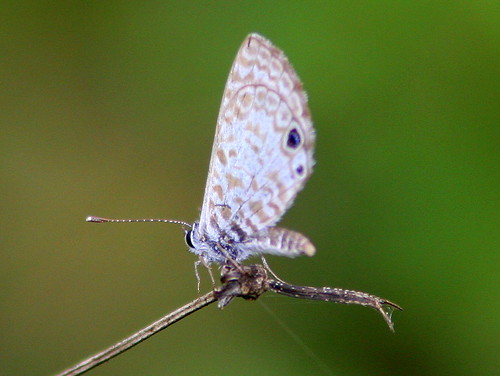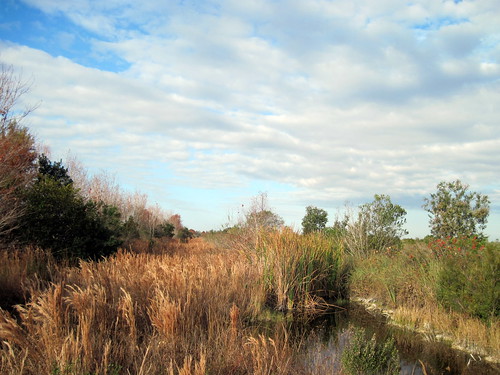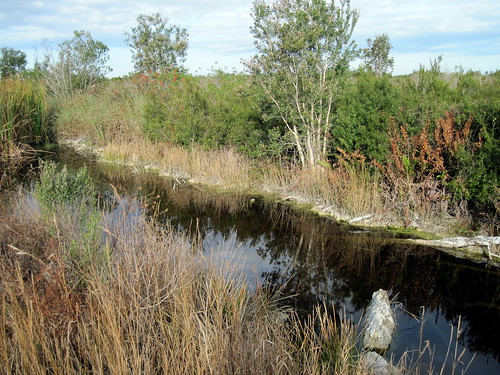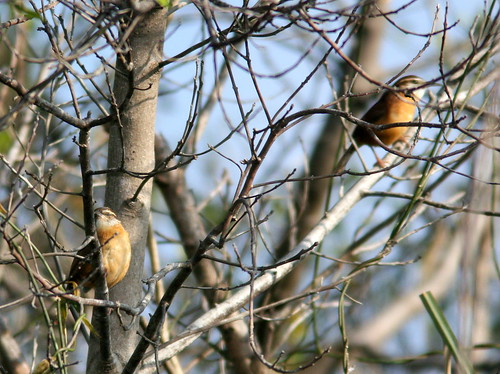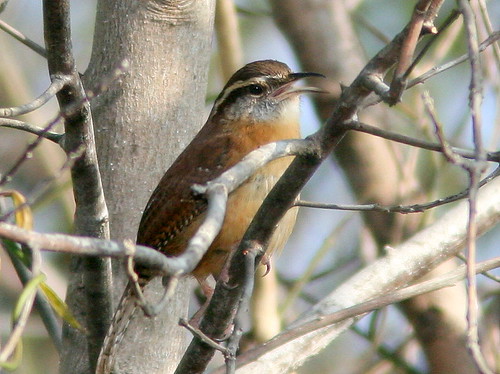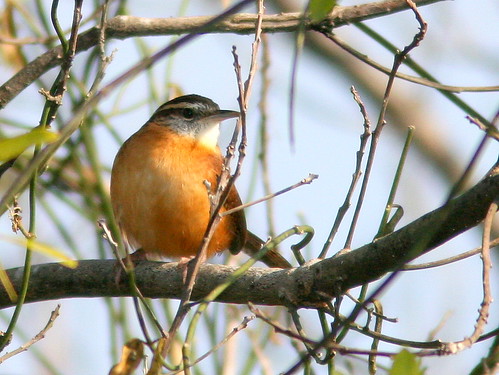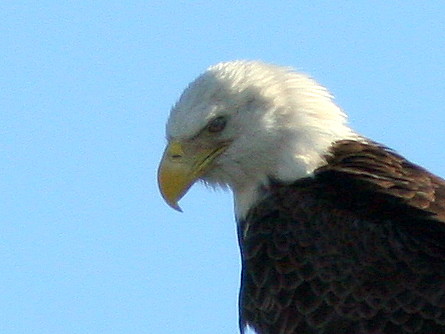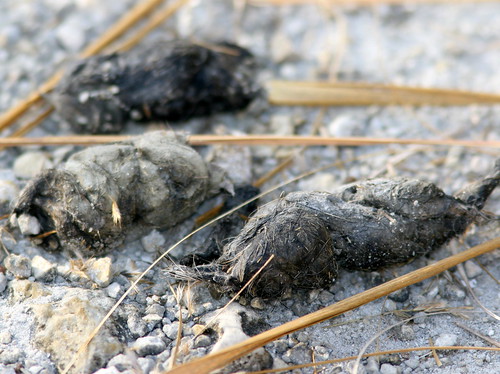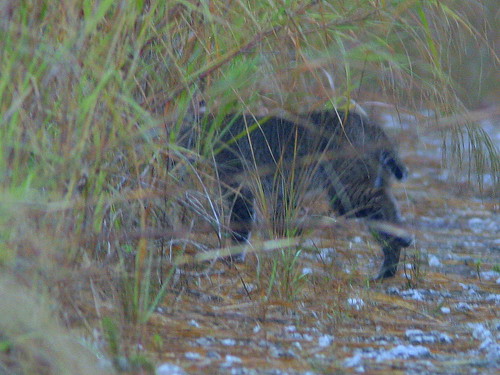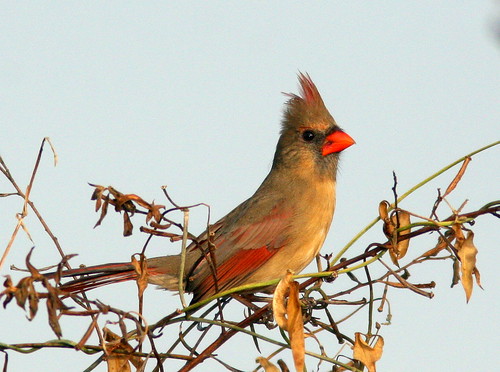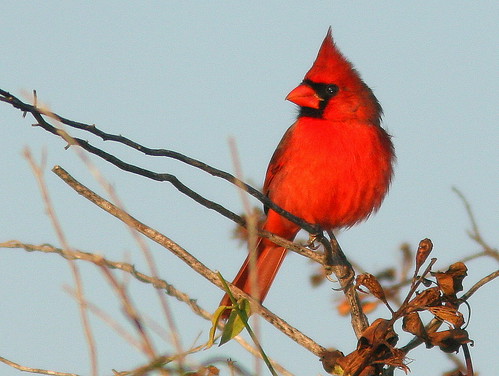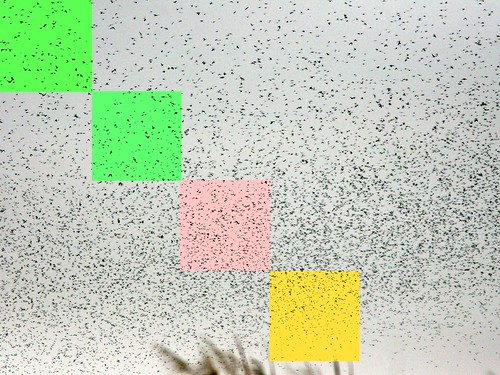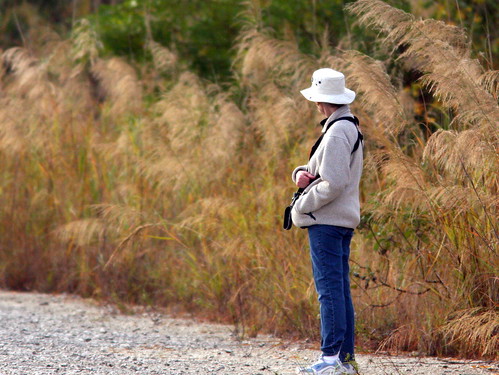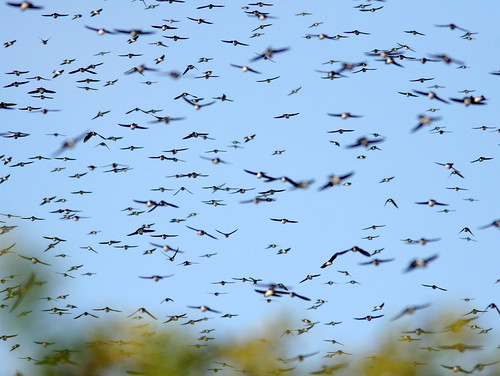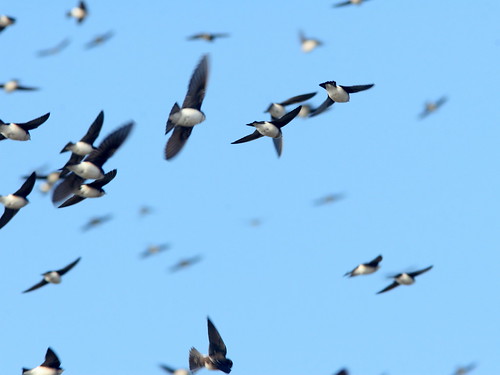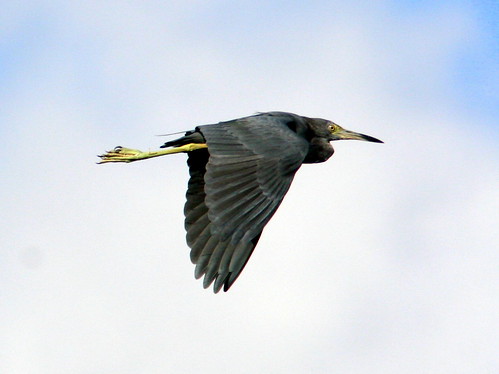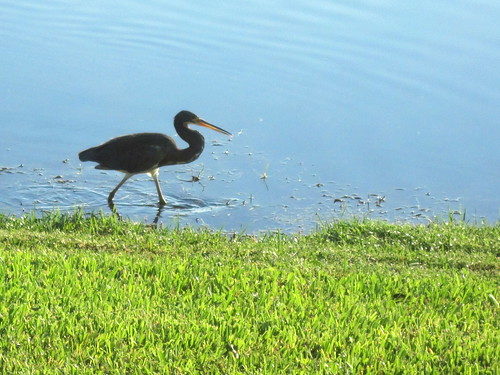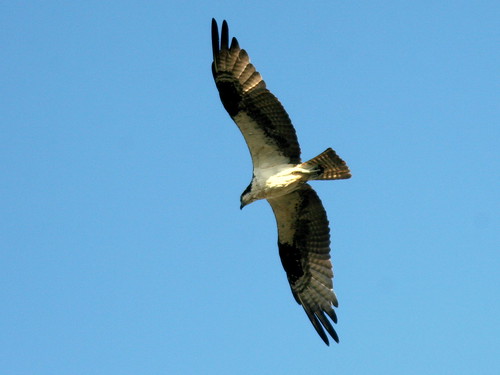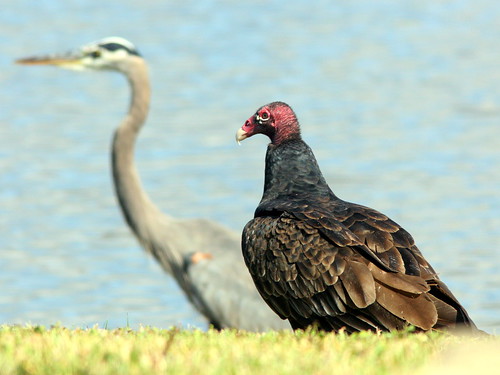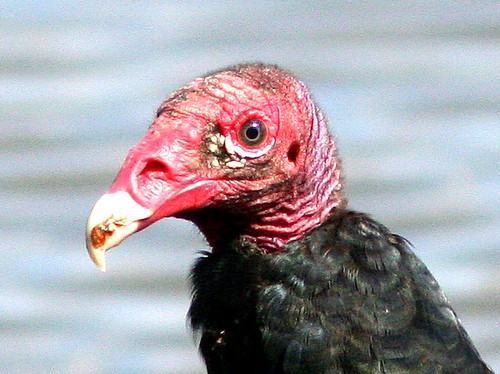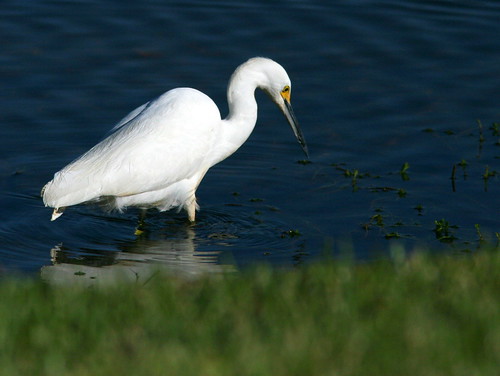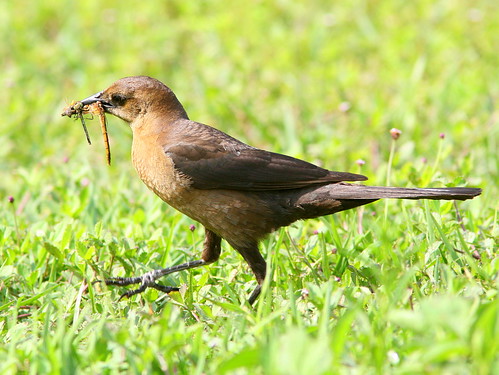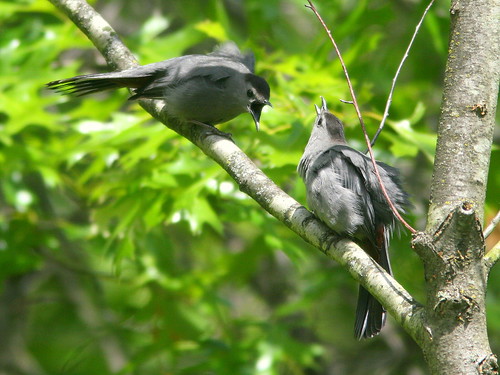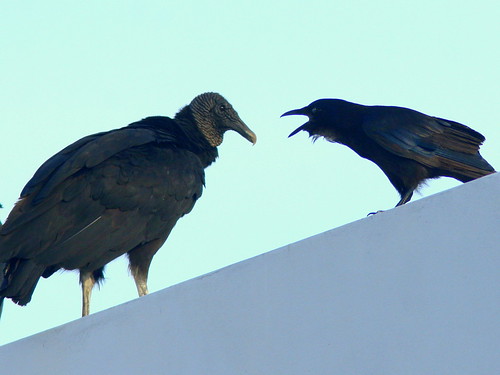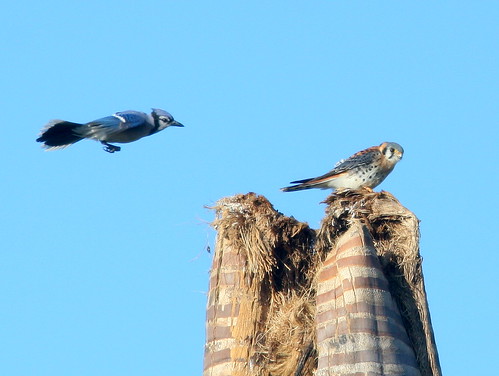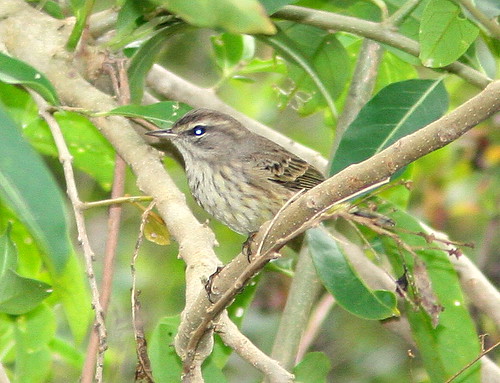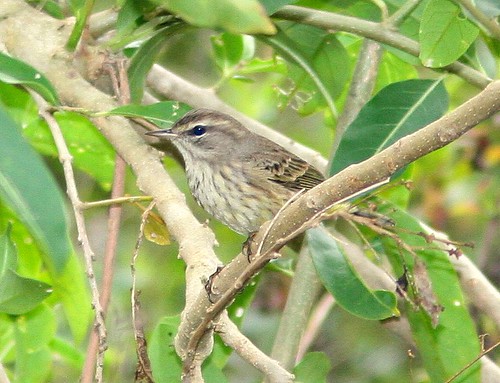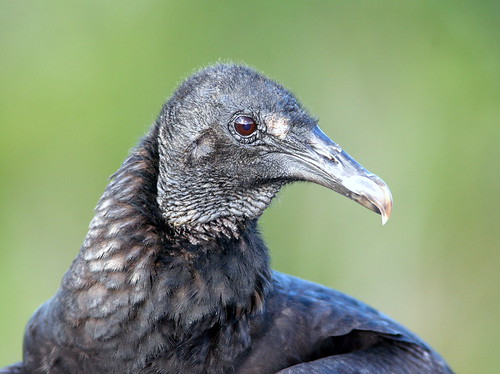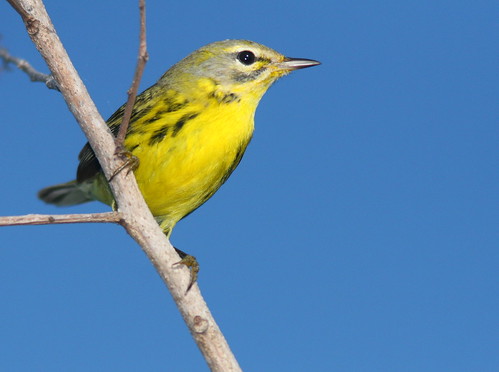Posted by: Ken @ 4:35 pm
It is essential to my well-being for me to get out at least a couple of days a week. “Out” doesn’t mean our regular, and enjoyable, early morning “power walk.” No, I’m referring to what comes next when chores and other obligations do not interfere– a walk on the wild side. Here in South Florida we have several favorite places within walking distance or a few minutes’ drive. One particular morning last week (before my encounter with the Bobcat and 300,000 Tree Swallows), I got out quite early.
Around 2:00 AM on December 21, my sleep had been interrupted by a compulsion to photograph the partial lunar eclipse (hand-held image):
A little before my usual waking time, fumbling with the camera controls in the dark, I tried to capture the full eclipse . I should have used a tripod in the low light, but I think you get the idea:
The night before, I had stayed up late to watch the Bears destroy the Vikings, and woke up to a beautiful morning, groggy but still anxious to get “out.” Shortly after sunup, I walked a few doors down the street from our home to exit our gated community, and turned westward on an unpaved road.
On the berm that runs along the road, two immature White Ibises foraged in the early light: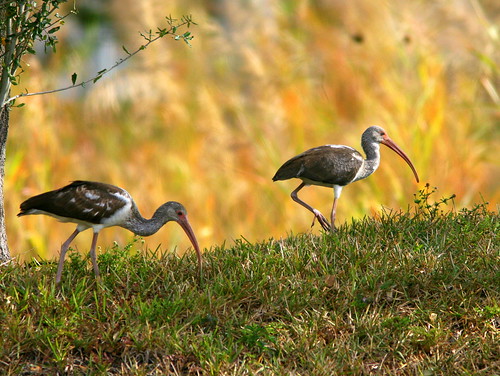
A slow ten-minute walk took me to a trail that leads south atop the levee along our birding patch of recovering Everglades. The noise of traffic and lawn mowers gradually faded, and I entered a new world, where faint sounds and tiny movements become important. Whether the call of a warbler, a rustle in the foliage, or the twitching of a doe’s ear, each demands my rapt attention.
The sun was still low and had just reached the hollow fractured top of a Royal Palm, where a little American Kestrel rested at the entrance of his winter lodging:
I peeked into a small opening in a nearby bush, to see a Northern Mockingbird that had probably spent the night on this perch. Secluded in the dark, the bird seemed very relaxed and did not fly when I approached quite close to take its picture. My flash lit up its little hiding hole.
The sharp focus on the bird’s eye was pleasant, so I saved an otherwise poor shot. I am pleased with the Better Beamer flash extender, as it seems not to cause eye shine at close distances:
As the sun reached down into the tops of the smaller trees, insects became more active, and so did their avian predators. A female American Redstart would not sit still for more than one or two seconds.
Most of attempts to capture a photo of this redstart displayed only empty branches:
A Blue-gray Gnatcatcher gleaned the foliage in the same tree:
A mustachioed male Northern (Yellow-shafted) Flicker perched briefly on a high branch:
Butterflies began moving as well. Among them, a Zebra heliconian, State Butterfly of Florida…
…and a tiny Cassius Blue:
With the onset of the winter dry season, water levels in the Everglades gradually recede. Only a month ago, the trail that crosses westward from the levee into the wetlands was underwater, but now I found it to be largely dry.
Looking west along SW 32nd St Trail (on the left) and Ditch:
From this vantage point, standing on a boulder, I often see Cottonmouths swimming along the ditch:
I was able to follow the trail a couple hundred yards before encountering mud and puddles. There were tracks of deer and raccoons, but no sign that anyone on foot or vehicle had used the two-track path. Invisible through the high grass, alligators splashed into the adjacent canal as I passed by. Two deer stared at me from far down the path, then melted into the grass. When I got closer I could hear them snorting or calling to each other, with what sounded like a coarsely whispered “How! How!” I assumed this helped them keep track of each other in the heavy cover.
Next to the wetlands trail, two unseen Carolina Wrens were singing a duet. The male started a very loud repetitive whistled “tweep-a-tweep-a-tweep-a-tweep-a-tweet” (There is great variety in their repertoire, from a three-syllable “teakettle-teakettle-teakettle…” to repetition of a single whistle that can sound almost like the hurried “cheer, cheer…” of an excited cardinal). It is amazing that such a tiny bird can make so much noise! At intervals, towards the end of his song, the female sometimes began a soft trill that continued after the male finished. I had to wait almost a half hour before they came into the open and sang in a small tree, about two feet apart. The high grass and foliage was so thick that I could not get a decent photo of both in the same frame.
Not one of more than a dozen photos provided an unobstructed view of the pair (male on left):
Here is my best shot of the male:
Emerging into the sunlight, the female Carolina Wren appears brighter in this image:
Starting to acknowledge the effects of a lack of sleep the previous night, I returned home earlier than usual. My rest was interrupted by an alarming e-mail from a local resident who said she feared that the nearby Bald Eagle nest, and maybe the tree that held it, had disappeared! The birds had begun incubating their first egg only about a week before. A cadre of volunteers keeps an eye on the eagles and communicate with one another on a Nest Watch Forum that I host on my web suite (subscribe if you wish to receive updates as they are posted).
The eagle nest has been quite hard to see this year, due to an overgrowth of exotic Melaleuca trees in front of it, and inexperienced onlookers (especially short people) really can have trouble seeing it. There had been some heavy winds with the recent cold fronts, and the nest tree is a shallow-rooted and brittle exotic Australian Pine, so I immediately followed up on her report. Upon arrival, I found that the tree was still upright, and one adult eagle was incubating peacefully, deep down in the nest cup.
Its mate then flew over the nest to chase away a Turkey Vulture that ventured too near, before settling to roost on a nearby snag: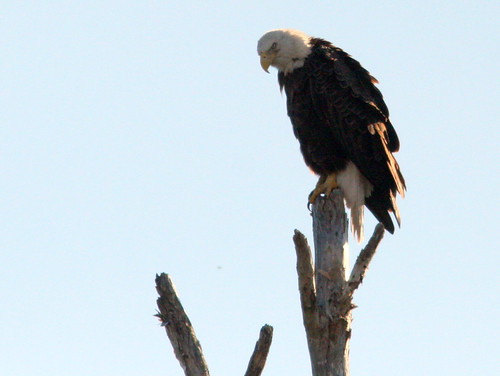
Both members of the pair share incubation duties. Over the past three breeding seasons, the male has retained a few dark spots on his outer tail feathers, as shown in these photos from the Nest Watch Forum..
The second eagle had pure white tail feathers, indicating it was the female: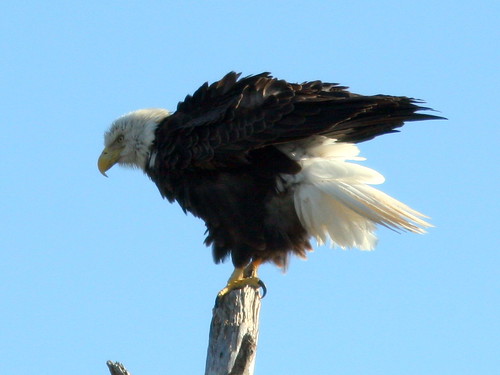
On direct comparison, the male is also noticeably smaller than the female. To my eye, the female appears fuller in the rear part of her abdomen than does her mate. Female Bald Eagles are said to have a longer talon on their back toes than the males, a feature not easy to judge in the field.
The base of her bill, from top to chin, is said to be proportionately larger than that of the male, but the difference is very subtle:
Posted by: Ken @ 10:12 pm
Too often, a photo fails to match one’s perception of a scene. How many times have I said, “If only I had a camera,” to capture an inspiring event. Conversely, how many times does the photograph fall so short of expectations? The simple explanation is that photos can record only two dimensional visual images. The experience itself involves so much more than a collection of shapes and colors.
Mary Lou and I set out before sunrise this morning to walk our little patch of recovering Everglades. Earlier this week I found fresh Bobcat scat (click on photo for more information, with apologies to the queasy):
We have had more luck seeing Bobcats early in the morning, and this morning we were not disappointed. We cautiously approached the secluded entry point of the trail that runs on top of the levee. As is our habit, we quickly looked both ways before coming out into the open.
To our right, about 20 feet away, a Bobcat saw us, and before I could aim my camera it began trotting away down the trail:
The Bobcat then ducked into the cover of high grass:
My special “sitting spot” near an extinct alligator hole usually yielded Swamp Sparrows and Prairie Warblers at this time of year. Today they did not appear, but an unusually beautiful female Northern Cardinal posed on some vegetation that had been burnt back by the recent hard frost:
Her colorful mate was nearby:
We then “power walked” another half mile north on the unpaved section of Miramar Parkway that will one day soon become a busy link between I-75 and US-27, stopping to view a Snowy Egret perched in a small tree on the banks of the Harbour Lakes impoundment: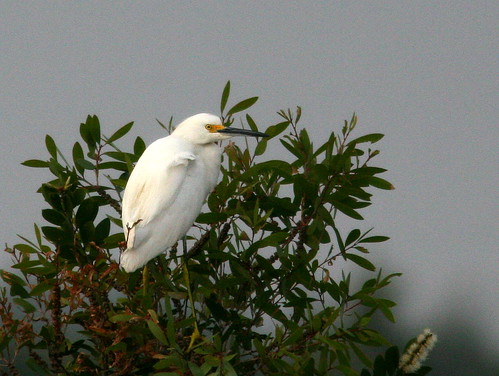
Wood Storks have been less common lately, hopefully because conditions in their secluded rookeries have just the right amount of underlying water to keep the raccoons out, yet not so much as to let the alligators in. This younger Wood Stork (having not yet acquired the white neck and fully bald head of an adult) has probably bypassed this breeding season:
We might have easily overlooked this immature Little Blue Heron and called it an “egret,” but we noticed its white is ever so slightly suffused by a bluish tint, and its gray bill is tipped with black: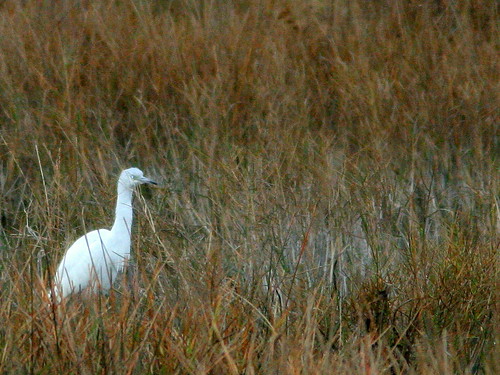
While returning from our walk, Mary Lou and I saw a flock of Tree Swallows about 1/4 of a mile ahead. They looked like a huge smoke plume. We were standing near the center of the graded and unpaved westernmost section of Miramar Parkway/SW 196th Avenue. The flock spread across about 90 degrees of the eastern horizon (from about 11 o’clock to 2 o’clock, above high grass on 4 foot levees and some distant small trees) in front and to our right. The flock actually faded into the horizon to our right front quarter and also into the distance directly in front of us.
Is it possible to estimate the number of birds in this flock? (click on the photo to see all five original photos):
My camera has a 420 mm telephoto system (300mm f/4 with a 1.4x extender). I did not have a wide angle lens. I estimate that my camera’s field of view included about 10 degrees of horizon and captured about half of the height of the column of birds. My photos included the lowest portion of the flock, where the birds were more densely aggregated.
I took five non-overlapping photos from nearly adjacent sections of the flock, mostly in front of me, during a 9 second interval (08:33:10 to 08:33:19). My long lens so limited the field that my 5 photos could not have covered more than 10% of the entire flock– possibly as little as 5%.
I selected one photo that was fairly representative of the five shots, taken in about the center point of the flock. This photo was cropped lightly down to screen size (88.9% of original size) and sharpened in Picasa. Using Paint.net, I re-sized my photo to 110 x 87 cm, or 9570 sq cm. I then outlined four 20 x 20 cm squares (400 sq cm each, for a total area of 1600 sq cm) diagonally across a representative sample of the photo, lightly colored each square, then greatly enlarged the image on the computer screen, and counted the number of birds (mostly specks) within each square.
I counted the birds in each of the four colored squares:
From the upper left, the 4 squares respectively contained 126, 206, 320 and 260 birds, for a total of 912 birds. This works out to 912 birds per 1600 sq cm, or 0.57 birds per square centimeter. Thus, the entire image contained approximately 5,455 birds (9570 sq cm x 0.57 birds/sq cm). If, in fact, my entire sample of 5 similar photos (27,275 birds) included only 50% of the flock, there were over 54,000 Tree Swallows in that single flight. If a quarter of the flock, it numbered 108,000 birds. I believe even this may be too conservative an estimate. If my impression is accurate, that the 5 photos only represented about 10% of the flock, there were a staggering 300,000 Tree Swallows in that seething cloud! At 21 grams apiece, the flock may have had a biomass of over 57 tons! This number, plus all those who were hidden under the high horizon to my right, as well as those that disappeared into the lower horizon (distant tall palm trees) in front.
As is usually the case, I wanted to hang around and take more photos, and Mary Lou decided to walk back home. A little ways ahead, as she rounded a bend in the gravel road, she froze to watch a small doe that had emerged from the high grass. This was about where the Bobcat had disappeared, so we wondered whether the cat had chased it out into the open:
Florida White-tails seem scrawny in comparison to those near our Illinois home:
As it turned out, I was not finished with the swallows, or maybe they were not finished with me. I had taken a shortcut to the levee trail, in hopes of intercepting the doe as she returned to the wetlands. Sure enough, the deer crossed right in front of me, but did not give me time for another photo.
As I stood in a clear area on the levee, the huge flock of Tree Swallows reappeared, heading in from the Everglades, low and fast, straight towards my position:
As they flew over I could hear a chorus of soft chirps and the rush of wind in their wings. Almost on cue, the entire flock changed direction at once with a loud “woosh.” Perhaps unwisely, I remembered the David Sibley eGuide to the Birds of North America app in my iPod and played the Tree Swallow calls. Almost immediately, the swallows began to circle my position. The entire flock of thousands seemed to be suddenly headed my way! I kept repeating the calls of the species, and the density of swallows surrounding me steadily increased. They flew within a few feet of my head in a counter-clockwise pattern (do Southern Hemisphere swallows circle in the opposite direction?). Some were nearly at ground level.
Their cries now emerged from a surreal dizzying vortex with me at the center, nothing like anything I have ever before experienced (click on photo for more views):
For a long vertiginous moment, it seemed that the birds were suddenly frozen in place, so still in the sky, and it was I and the trail and the trees who were spinning, now clockwise. I did not want the swallows to stop, but I felt a bit guilty for having excited them so. For minutes after I turned off the recorded calls, they continued to wheel around me. Even after I walked down off the levee toward home, I looked back to see the swallows, still circling my former position.
Oh, how I regretted that I did not have my point-and-shoot camera to capture the depth, the expanse, the dynamics of this flock of swallows. But it was an experience more spiritual than visual, to be felt, not seen. A photo is not enough.
South Florida has just undergone a couple of weeks of embarrassingly cold weather. Two Arctic fronts passed through the peninsula, each setting new record low and “low high” temperatures. Near-freezing temperatures and two hard frosts in our neighborhood killed some of our tropical plants despite our efforts to water and cover them. In the Everglades, exotic vegetation froze and then dried up, posing a fire hazard in coming months.
An article in the Sun-Sentinel reported:
A record number of manatees died this year in Florida as last winter’s severe cold snap brought water temperatures below the level the animals need to survive.
The Florida Fish and Wildlife Conservation Commission announced Friday that 699 manatees had been found dead in state waters from Jan. 1 through Dec. 5. Of these, 244 are known to have died from cold, with additional cold casualties suspected among the 271 carcasses recovered without a known cause of death
We live 18 miles inland, right against what is left of the Everglades, so we do not have any manatees near us. We did have an extraordinary fish kill this past January See: Frozen Fish and Scavenging Serpents. Then, most were exotic species such as cichlids, especially tilapia and aquarium species such as Oscars, Plecostomas and mouth breeders that were intentionally or accidentally released. The lack of evidence of a fish kill this time probably means that the cold temperatures were not sustained long enough to cool the water down to the depths. It appeared to me that the fish that died in January were mostly adults. Maybe their fry are more resistant to the cold, or they tend to range deeper in the canals and lakes where the water is warm, or perhaps we are seeing natural selection at work, producing a new breed of exotic fish that will survive under colder conditions.
The weather and the lingering effects of an upper respiratory infection and bronchitis kept me pretty much confined to quarters, so I tried to make the best of the situation by keeping an eye on our back yard. Here in Florida, there are just too many big birds that are easy to photograph. I do miss our former New Mexico home, where our backyard would probably be hosting Evening Grosbeaks, Cassin’s Finches, Red Crossbills, Canyon Towhees and Clark’s Nutcrackers, along with the ever-present Steller’s, Western Scrub and Pinyon Jays, Mountain Chickadees, Gray-headed Juncos, Bushtits, Juniper Titmice etc etc. No surprise– I especially like to photograph the “little guys.” However, here are a few recent images of the big Florida birds, some so close that they overfill my telescopic lens..
A Little Blue Heron flies past our patio:
Another Little Blue probes the opposite shore of our lake: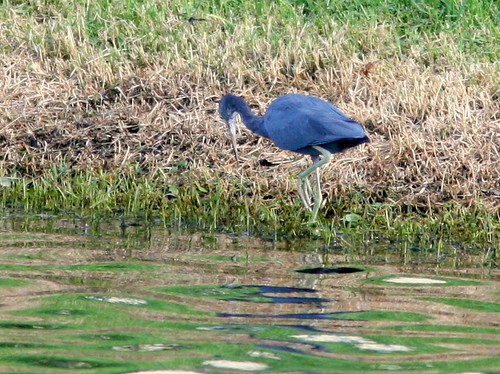
A Tricolored Heron settles down and does some fishing in our back yard:
An Osprey hunts for fish over our lake:
I looked outside to find vultures eating something at the edge of our lake.
Close-up of the Turkey vulture (I assume his mother loves his face):
Close up of a Great Blue Heron that was mingling with the vultures:
Also on the opposite shore, a more distant Tricolored Heron, typically doing an animated high-step: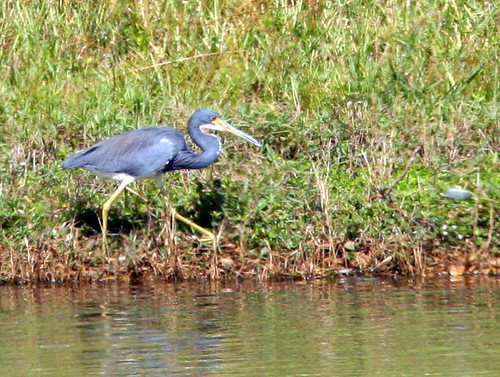
A Double-crested Cormorant picks an unusual perch (its plumage also appears to be sculpted):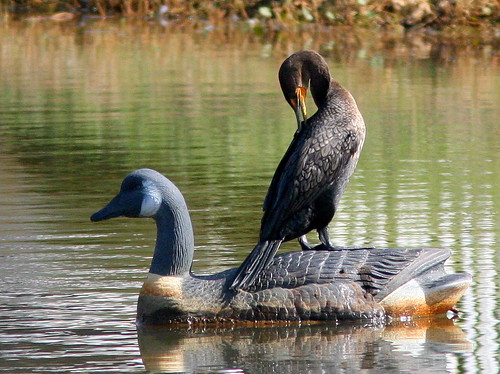
Then, a Muscovy Duck displaces the cormorant. The decoy serves as a float for the intake of a neighbor’s lawn sprinkler system intake: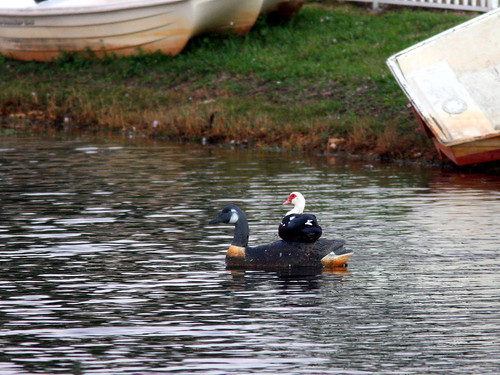
A Great Egret walks along the back edge of our lawn: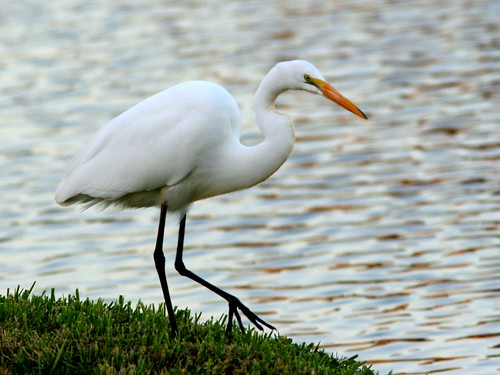
A smaller Snowy Egret in waning evening light:
Nearby, an adult White Ibis. Like the Snowy Egret and the Wood Stork, they sometimes stir the water with their feet to startle fish out of cover:
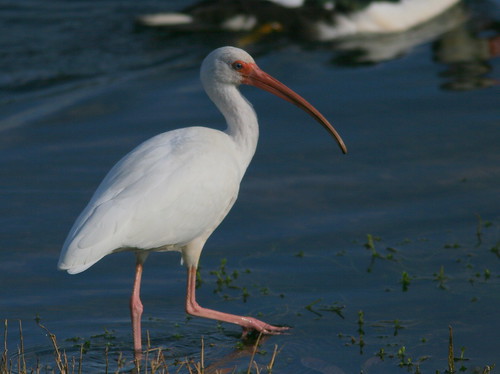
As does the Wood Stork, the White Ibis feeds by touch rather than sight. Water must be between 4-7 inches deep in order for this technique to be most successful. They also probe in soft earth: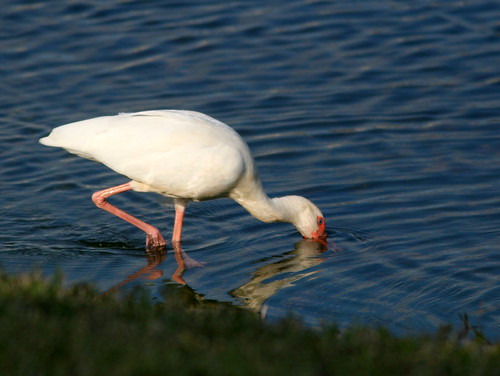
Posted by: Ken @ 2:42 pm
Even the most casual observer knows that birds are not always nice to each other.Territorial disputes are common, between birds of the same or different species. In our Florida neighborhood, mockingbirds seem to defend an invisible property line and face off on either side of it. Blue Jays and Northern Mockingbirds chase each other through the trees, the way I used to see jays and robins fight over domination of our back yard cherry tree in New Jersey.
One might ask, why don’t birds just get along and not waste energy fighting with one another? In nature, behaviors usually carry some survival value which may not always be readily apparent. Of course, defense of nesting and feeding territory is a most basic form of “Homeland Security.”
Disputes between birds usually do not result in physical violence. Often, an aggressive gesture or a hostile verbal exchange is enough to settle a dispute, at least for the moment.
These two male Boat-tailed Grackles (no this is not an exotic “Three-legged Frogmouth”) are vying for control over the same nesting harem, centered around a medium-sized palm tree in our yard. Click on the photo to see ritualistic sequences in their non-violent “dance competition,” after which the loser simply flies away :
A markedly dissimilar female Boat-tail grasps a dragonfly to feed to her young and seems to pay no attention to the epic contest:
Birds cannot frown, but posture can convey hostile intent. Are these Gray Catbirds having a domestic disagreement?
Ironically, survival of a species may require fights to the death of some nest-mates. When food is scarce, parents may not be able to feed an entire brood. In this case the youngster that competes best for nourishment may benefit when the weaker dies of starvation. With birds whose eggs hatch asynchronously, such as the Bald Eagle, the older and stronger chick has the advantage. The season before last, our local pair of eagles hatched out two eggs. The older eaglet, a female that was named “Hope” in a national poll, always managed to be fed first, and her little brother “Justice” waited patiently for his share. Since there was an abundance of food, both thrived and successfully fledged.
Here, Hope (on the right) sits on the food and threatens her little brother as he attempts to take some for himself: 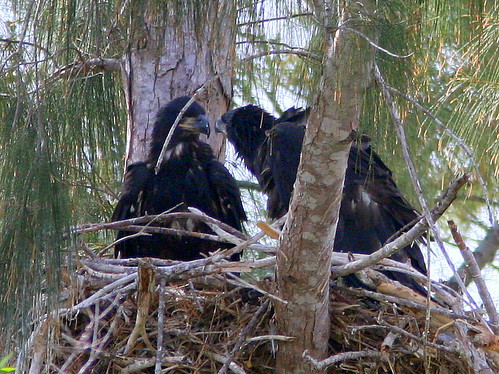
Responding to the threat, Justice backs off and assumes a passive position, nearly on his back: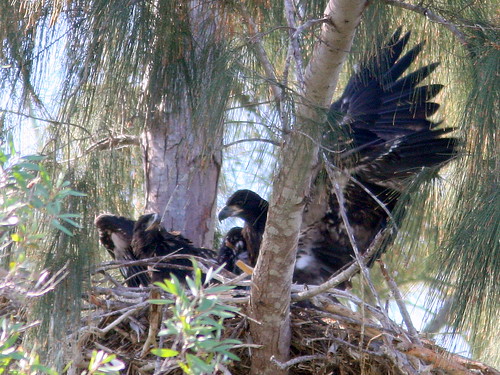
A majestic eagle, tending a nest near our Illinois home, is pestered by a lowly Red-winged Blackbird:
I captured this bold attack by a Common Grackle, on one of two Red-tailed Hawks as they sat peacefully on an Illinois neighbor’s roof:
Another attack that I witnessed involved a Wood Stork with a prey item in its bill as it unwisely approached a Great Blue Heron’s position at the far edge of our Florida lake. The heron charged it, but the stork held fast to its booty.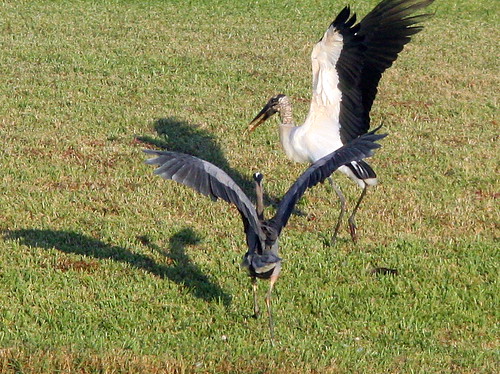
Atop a telephone pole in the wild area near our Florida home, a Loggerhead Shrike and then this Northern Mockingbird took turns flying at a Fish Crow: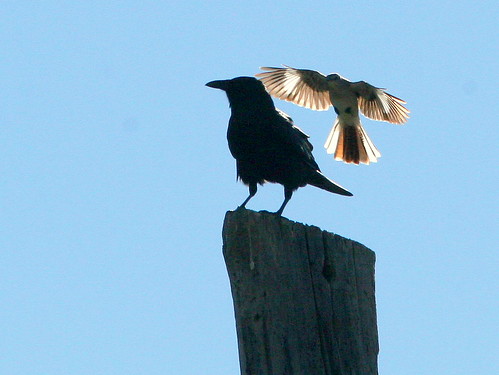
Here, it was the Fish Crow’s opportunity to harass a Black Vulture as it roosted on the handball court at a local Florida soccer park:
A pair of (Yellow-shafted) Northern Flickers “owned” the broken-off top of a tall Royal Palm, that is…
…until a male American Kestrel migrated down to Florida and decided to evict the flicker: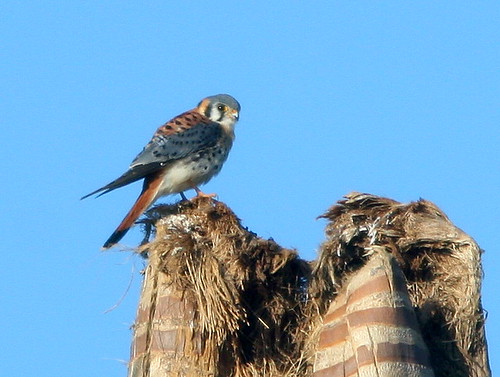
A few days ago, I watched as a drama played out, when a Blue Jay began scolding the raptor from a nearby tree.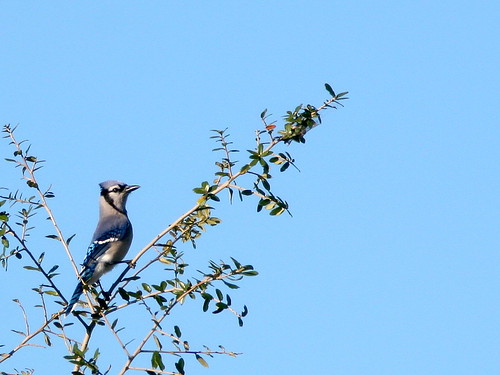
Before the encounter, the kestrel appeared to be minding his own business, but the Blue Jay moved up to attack: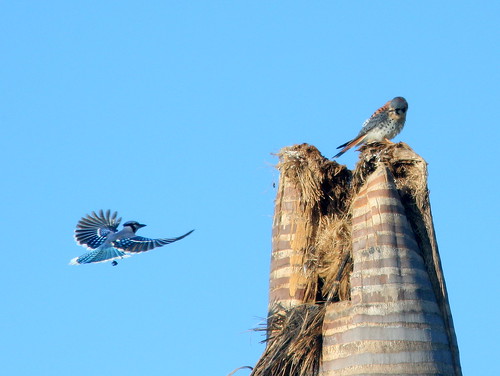
At first, the kestrel held his ground and seemed to ignore the jay’s taunts:
The jay never touched the kestrel, but it swooped very near: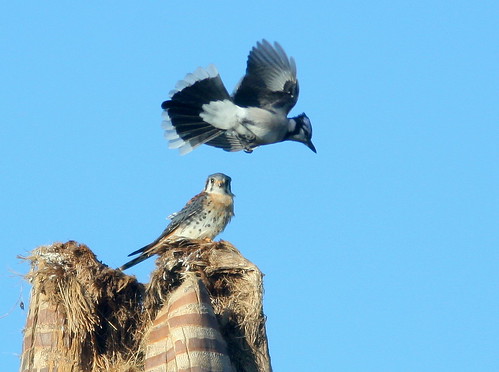
Succumbing to the relentless attack, the kestrel flew off and roosted about 100 yards down the road, but the jay persisted, and both flew away out of view: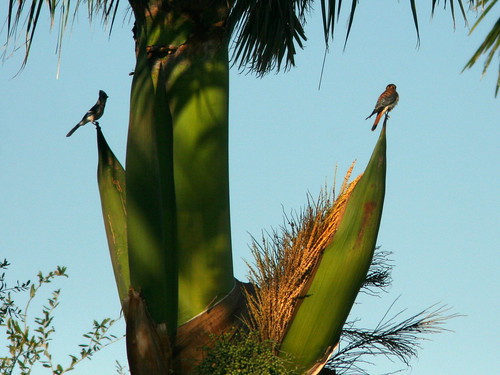
A couple of hours later, on my way back out the road, I was surprised to find that the kestrel had returned to his original perch, high on the palm stump:
Now with no jay around to bother him, the kestrel flew down, caught a Halloween Pennant dragonfly, and ate it in peace:
The kestrel then stretched his left wing and fanned his tail. For me it was an unprecedented display of his beautiful plumage:
Posted by: Ken @ 2:04 pm
I thought long and hard before I finally bought a flash attachment for my camera.
Having been born in the depths of the Great Depression, I grew up with an acute appreciation of the cost of things. I remember when a nickel or even a penny could buy some pretty good stuff. Only lately have I appreciated the sacrifice that was involved when, in 1942, my mother gave me my first Roger Tory Peterson Field Guide to the Birds. My Mom encouraged my avid interest in birds, and she bought the book for $2.75. According to the Bureau of Labor Statistics Inflation Calculator, her $2.75 would be worth $36.90 in today’s economy. It was a first edition, revised in 1939. (I still have it– see it here).
A recent explanation of benefits that I received from Medicare got me thinking about the cost of medical care. It included payment information about two medical encounters, with a dermatologist and a podiatrist. The dermatologist charged $96 for a routine office visit, and the podiatrist charged $100 for the same level of service. Medicare approved the amount of $67.57 for both visits, and paid its share of that amount, which was $55.66 in each case.
Back in 1961, before Medicare was enacted, I entered family practice in New Jersey. I charged $5 for an office visit and the patients usually paid me directly and filled out their own insurance forms for reimbursement. Other charges were $7 for a house call during the day and $10 at night (roughly defined as after 8:00 PM. Other primary care specialists such as Internists and Pediatricians charged $10 to $15 for office visits. I think the few specialists who performed house calls charged something like $15 to $20.00. According the Inflation Calculator, today my $5.00 office visit is worth $36.57 in inflation-adjusted dollars. The Internist would get $73.15 for that $10.00 office visit, or $109.72 in today’s dollars for the $15.00 visit.
So, I rationalized, a $400.00 flash unit really would only cost me about $30.00 in 1942 dollars– not much more than what my Mom paid for my first Peterson bird book! Not bad at all. So I sprung for the Canon Speedlight 580EXII. As soon as the flash unit arrived I went out into our local patch and took some photos of birds. When I got home and viewed my shots on the computer screen, I was dismayed.
Here is my very first flash photo, of an American Kestrel against a bright overcast sky, high atop a Royal Palm shoot, about 70 feet away: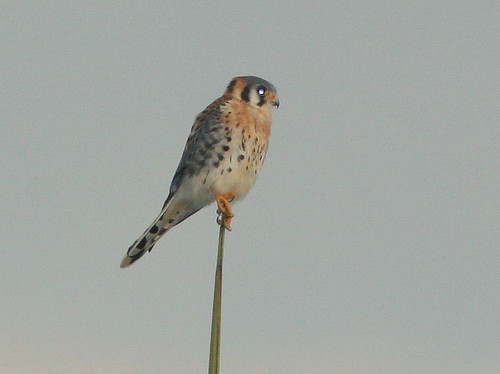
The flash did lighten up its body, which would have looked like a silhouette without it. But ugh! Those eyes! Why did I waste my money?
Another disappointing photo was that of a (Western) Palm Warbler hiding in some shrubs, deep in shade with the sun behind it, at a distance of about 50 feet:
The “steel eye” reflection had spoiled this photo as well. I have seen many bird photographers use flash. Their bird eyes never turned out like this! Or so I thought. First, I wanted to know why this happened to my images, and then find out how to prevent it. My Internet search yielded a very useful web site that explained my problem. It was eye shine, also called “steel eye,” the equivalent of “red eye” in humans. It appears that the problem worsens, the farther away the bird is from the flash, because the relative distance between the lens and the flash decreases with distance to the subject.
Parallax, the difference between the view of a subject as seen through the picture-taking lens of a camera and the view as seen from the flash unit, decreases as the subject becomes more distant. Because the angle of parallax is so slight at long distances, the flash lights up the bird’s retina, which is very reflective, rather than bouncing off the cornea. Small point-and-shoot cameras with flash units close to the lens cause “red eye,” even at short distances, for the same reason. The human retina does not reflect as much light as that of a bird, so we see the red from the retinal blood vessels. Since locating the flash unit far away from the camera is not very easy to do in the field, the only practical solution is to edit the photo and create an artificial catch light, mimicking the reflection of the sun off the cornea. I tried this approach, following instructions on the web site:
Since I do not have Photoshop, I used “Poor Man’s Photoshop,” a free program, Paint.net (remember, the Great Depression?) to edit the steel eyes of both birds. I first blackened the entire eye, and then added the catch light, one pixel at a time.
Here are the results– now I feel rather dishonest about displaying them as “originals:”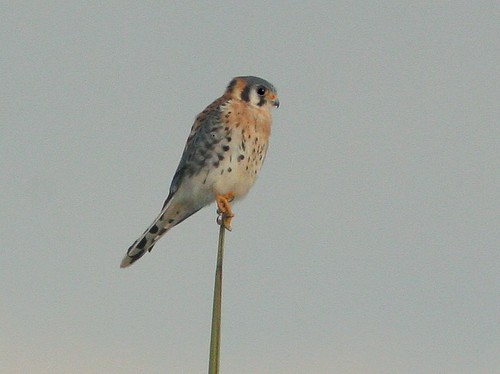
This Palm Warbler, at much closer range, had a hint of “steel eye,” but I left it alone as it was not unattractive. Its long legs are an adaptation to its habits of feeding on the ground:
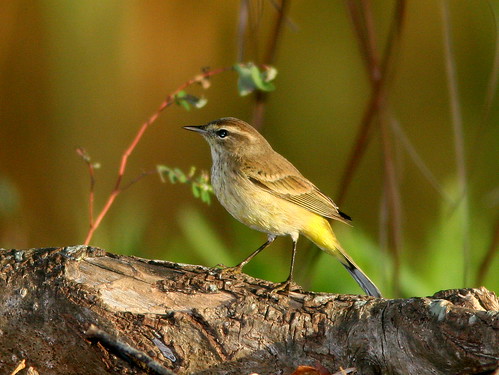
I deliberately went around looking for shots that would definitely have been terrible without a fill flash. This Green Heron had not only the sun, but reflection from the water behind it. At about 30 feet, the flash overcame the deep shadow: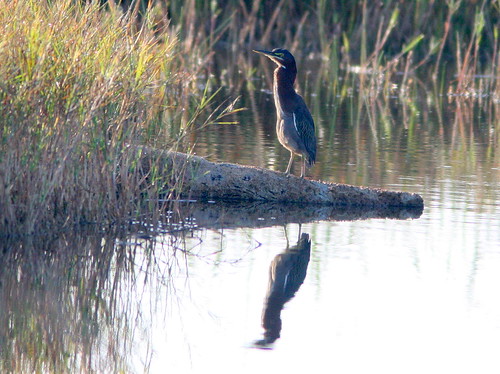
The flash brought out the details of a male Belted Kingfisher that fluttered above the water before plunging for a fish: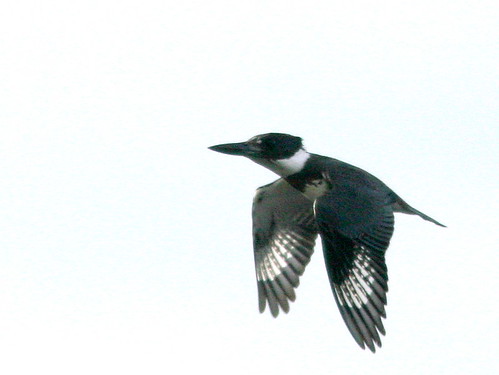
The kingfisher caught quite a large fish, that looks like a young bass (click on the photo for a sequence as it swallows the fish):
A few days later, an accessory arrived– a Better Beamer flash extender. It uses a Fresnel lens to focus the flash in a spot so that it carries a greater distance. I tried it out on one of our local Bald Eagles that was high on a perch with sun over its shoulder. It illuminated the bird’s breast fairly well: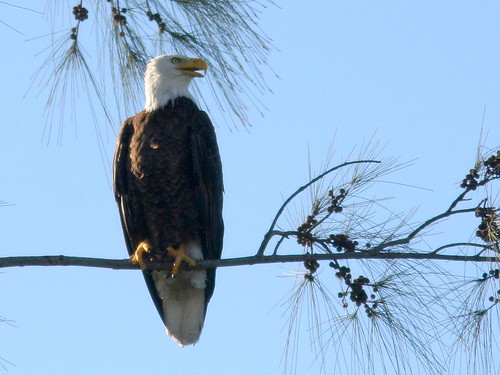
Black plumage can be problematic, as with this Turkey Vulture that was sunning itself on the boardwalk of the local Pines Soccer Park and Nature Preserve:
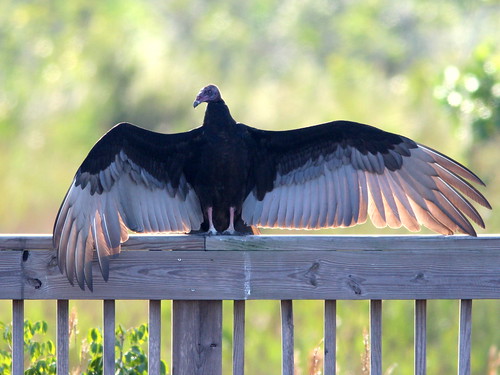
The Better Beamer flash brought out the feather texture of this nearby Black Vulture without causing eye shine:
A Wood Stork and a Great Egret look as if they are not speaking to each other. Actually, I often see Wood Storks and herons fishing together. Their methods differ, as the stork captures fish by touch and the heron does so by sight, so they don’t compete and may actually benefit from the association.
The BB attachment reached out and gave me pretty good illumination of the subjects, about 70-80 feet away:
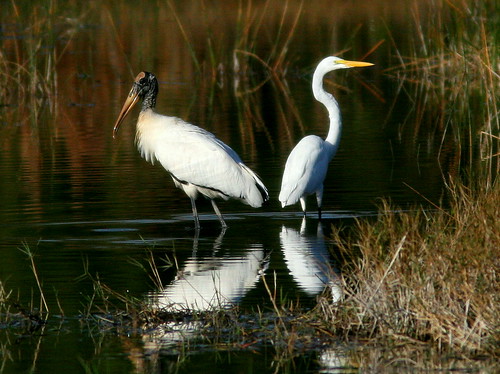
I think the undersides of this female Northern Harrier may be better defined, thanks to fill flash:
While I was waiting for an elusive Swamp Sparrow to reappear, a curious female Prairie Warbler came right up to my shady “hiding place.” The eye reflection from my “Better Beamer” flash extender is fine, since the bird is so near, about 8 feet. I also think the fill flash enhanced the bird’s natural color against the bright blue sky:
ADDENDUM (December 6, 2010):
I have received questions about whether flash photography startles or harms birds. Before I took up photography, and even while I was photographing birds without flash, I was concerned that flash would scare the birds away. I’ll admit that I felt angry and almost wanted to confront photographers who were surrounding a Cuban Pewee in the Everglades. When I asked photographers about it, they all said it had no effect on birds’ behavior. In truth, the pewee did just stay in place and kept coming back despite all the disturbance.
The consensus seems to be that under low light conditions, use of flash may disturb some birds, or even interfere with owls’ adaptation to the dark and thus be harmful. Certainly shining a floodlight on an owl can sometimes immobilize it, probably because it is temporarily blinded.
An Internet search turns up lots of anecdotes and opinions about the issue. However I could find no scientific evidence from controlled experiments that shed “light” on the subject. In daylight, flash photography appears to cause no change in behavior. In fact, just yesterday I was standing by a damaged shrub that was a favored foraging site for Prairie Warblers and a House Wren. I used flash before they approached the shrub, and they flew towards me and I continued to use the fill flash at short range.I actually had to switch my lens to a macro setting for the Prairie Warbler that was only about 5 feet away from me as I was using the flash.
This article addresses the issue of harm or impairment of the bird or other animal’s vision by flash, and concludes that permanent damage is unlikely.
Another view, from the Digital Bird Photography web site (an excellent resource), mentions an instance in which flash did disturb an Osprey. It also admonishes photographers to be sensitive to the concerns of others who believe that use of flash constitutes “harassment.”
Ken














